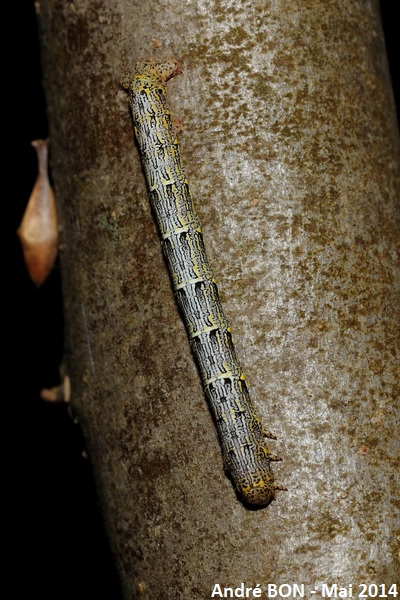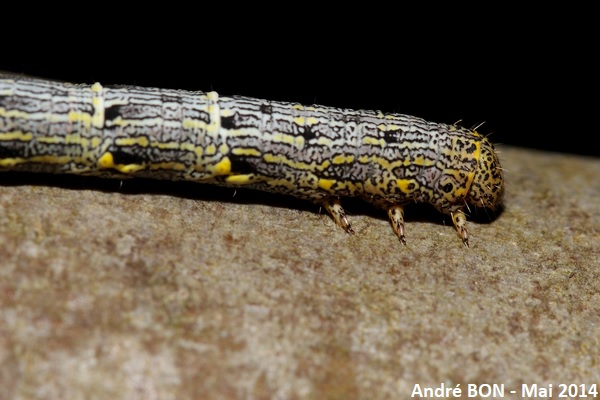

| Fruit Beauty Moth (Lycia pomonaria (Hübner, 1790)) |


|
|
Scientific name: Lycia pomonaria (Hübner, 1790) Common name: Fruit Beauty Moth French name: Phalène pomone Order: Lepidoptera Suborder: Heterocera Family: Geometridae Subfamily: Ennominae Wingspan: 30-35 mm for males, females have vestigial wings. Biotope: Damp forests. Geographic area: Northern and central Europe (expanding westwards), Asia east to Kamchatka. Flight time: February-May. Number of generations : 1 Caterpillar: Longitudinal grey stripes outlined with black, with black and yellow spots on the lateral sides. The front of the prothorax is marked with yellow. Host plant: Common Aspens (Populus tremula), Lime Trees (Tilia), Birches (Betula), Willows (Salix), Vaccinium among others. |
Female Fruit Beauty Moth cannot fly. It shows a large black hairy body powdered with orange scales and with slightly longer white hairs. It stands hidden on tree trunks and attracts males with its pheromones. Males have translucent whitish wings showing dark veins and sometimes weekly marked darker cross stripes. The abdomen is orange black. The fore wings' costal and inner edges are darker and may also show some orange scales. The antennae are feathery. Lycia pomonaria over winters as a pupa. |
| [To know more about the Fruit Beauty Moth] [Next picture] [Top] |

|
I have observed this caterpillar in the shadow of the forest and I had to use the flash to shoot the picture. |
| [To know more about the Fruit Beauty Moth] [Previous picture] [Top] |

|
I think that this one is a rather typical form of Lycia pomonaria's caterpillar. I have seen other pictures in various galleries where the difference with Lycia hirtaria's caterpillar appeared less obvious to me. |